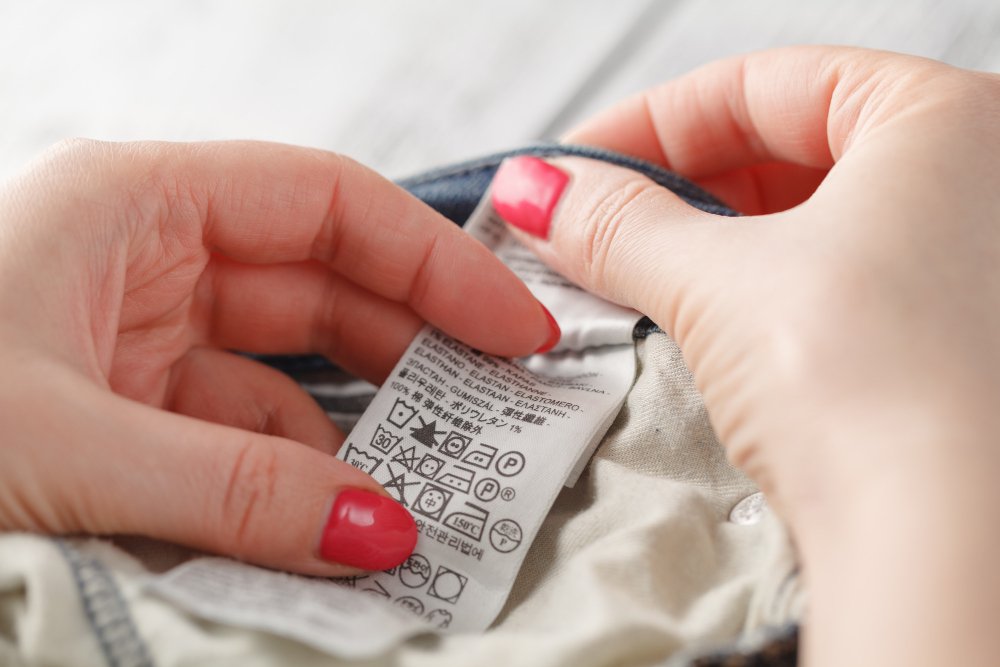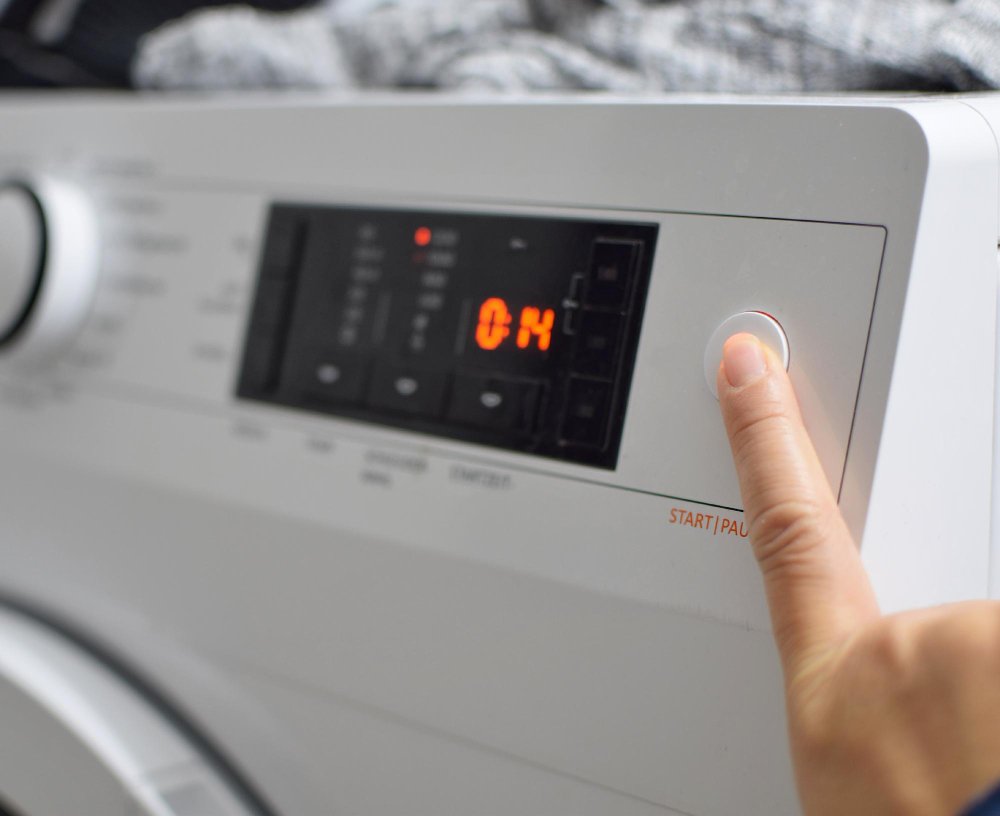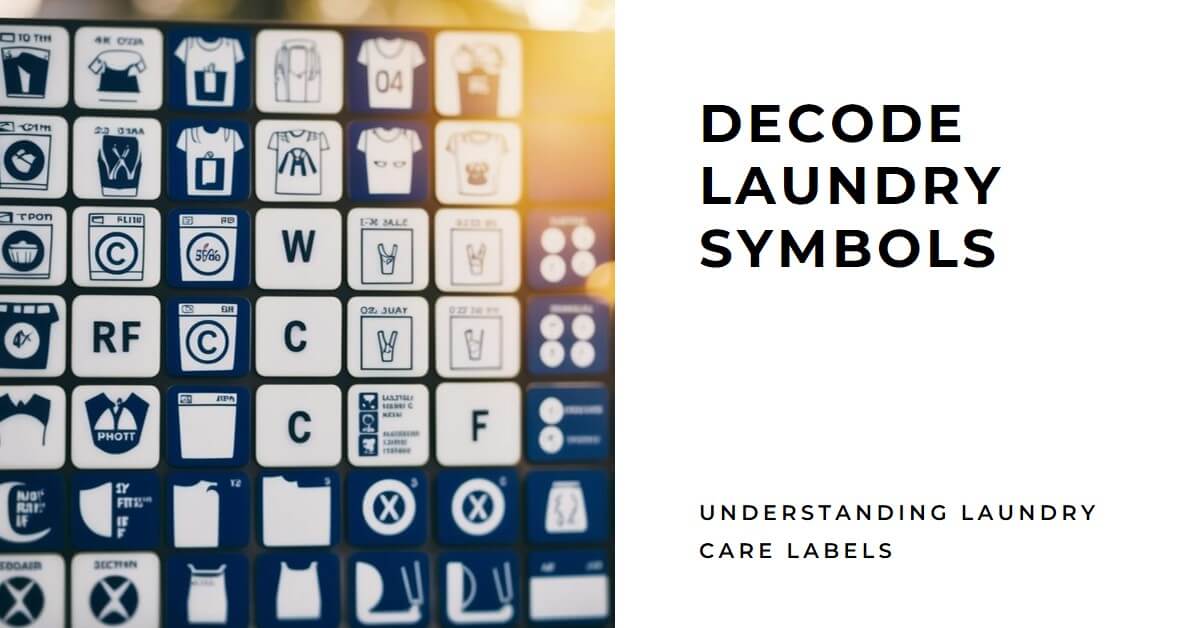Have you ever stared at those tiny symbols on your clothes tags, feeling puzzled? I’ve been there too. Laundry symbols can seem like a secret code, but they’re actually quite helpful once you know how to read them. These little icons tell us how to wash, dry, and care for our clothes properly, helping them last longer and look better.
I’ve found that understanding these symbols can save time and prevent costly mistakes. No more accidentally shrinking favourite jumpers or ruining delicate fabrics! With a bit of knowledge, we can keep our clothes in top shape and avoid unnecessary replacements.
Let’s unravel the mystery of these laundry symbols together. I’ll guide you through the most common ones, from washing and drying to ironing and dry cleaning. By the end, you’ll be able to tackle your laundry with confidence, knowing you’re giving your clothes the best care possible.
On This Page
Key Takeaways
- Laundry symbols provide essential care instructions for our clothes
- Understanding these symbols helps prevent damage and extends garment life
- Proper care based on label instructions saves time and money in the long run
Deciphering Fabric Care Labels

Fabric care labels contain symbols that tell us how to properly clean and maintain our clothes. These symbols guide us on washing, bleaching, drying, ironing, and dry cleaning.
Washing Symbols
The washing symbols are vital for keeping our clothes in top shape. A tub icon means the garment is machine washable. If there’s a hand in the tub, it means hand wash only.
I always check the temperature too. The number inside the tub shows the max wash temp in Celsius. For delicate items, I look for the gentle cycle symbol – a tub with a line underneath.
Some labels have a crossed-out tub. This means “do not wash”. I’m extra careful with these items and usually take them to the dry cleaners.
Bleaching Symbols
Bleaching symbols help us avoid damaging our clothes. A triangle means bleaching is okay. If it’s empty, any bleach will do.
I look for two lines inside the triangle. This means only non-chlorine bleach is safe. A crossed-out triangle? No bleaching at all.
It’s important to follow these rules. Using the wrong bleach can ruin a garment’s colour or even damage the fabric.
Drying Symbols
Drying symbols are key to preventing shrinkage and damage. A square with a circle inside means tumble drying is fine.
I always check for dots inside the tumble dry symbol. One dot means low heat, two dots medium, and three dots high heat.
A square with a curved line on top means line dry. A flat line means lay flat to dry. These are best for delicate items.
If I see a crossed-out tumble dry symbol, I avoid the dryer and air dry instead.
Ironing Symbols
Ironing symbols help us avoid scorching our clothes. The basic symbol is an iron. Dots inside show the heat setting: one for low, two for medium, three for high.
I’m careful with crossed-out iron symbols. These items shouldn’t be ironed at all. Some labels show an iron with crosses over the steam. This means no steam ironing.
For delicate fabrics, I look for the iron symbol with dots underneath. This means to use a pressing cloth when ironing.
Dry Cleaning Symbols
Dry cleaning symbols are crucial for special care items. A circle means the item is dry clean only. Letters inside the circle guide the dry cleaner on which method to use.
If I see a crossed-out circle, it means no dry cleaning. Some circles have a line underneath. This indicates a short cycle or low heat dry clean.
I always take these symbols seriously. Washing a dry clean only item at home can ruin it completely.
Understanding Washing Temperatures and Cycles

Washing clothes properly involves choosing the right temperature and cycle. I’ll explain the key settings and how to care for different fabrics.
Washing Machine Settings
Most washing machines have several temperature options. Cold water (20°C) works well for dark or bright colours to prevent fading. Warm water (30-40°C) is good for everyday loads. Hot water (60°C) is best for whites and heavily soiled items.
Cycles vary too. The normal cycle uses more agitation and is suitable for sturdy fabrics. Permanent press uses less agitation and a cool-down rinse to reduce wrinkles. The delicate cycle is gentlest, with slow tumbling and spinning.
I recommend checking garment labels. They often show the ideal temperature as a number in a washtub symbol. Some use dots instead – one dot means 30°C, two dots 40°C, and so on.
Hand Wash Care
Some delicate items need hand washing. I fill a sink with cool water and add a mild detergent. I gently squeeze the suds through the fabric, avoiding rubbing or twisting. Then I rinse thoroughly in cool water until all soap is gone.
After washing, I press out excess water. I never wring or twist delicate items. Instead, I roll them in a towel to remove more water. Finally, I lay them flat to dry, reshaping as needed.
Hand washing takes more time but helps protect delicate fabrics from damage. It’s ideal for wool, silk, and some synthetics.
Special Fabric Considerations
Different fabrics need different care. Wool shrinks in hot water, so I always use cool water and gentle handling. Silk is delicate and can water-spot, so I use lukewarm water and rinse with a bit of vinegar to keep it soft.
For synthetics like polyester, I use warm water and a normal cycle. Cotton can handle hotter water, which helps remove stains. But for dark cottons, I use cool water to prevent fading.
Denim is tough but can fade. I wash it inside out in cold water to keep the colour. Activewear often needs cool or warm water to protect its special fibres.
Best Practices for Drying and Ironing

Proper drying and ironing techniques can keep your clothes looking great and lasting longer. I’ll share some key tips to help you care for your garments effectively.
Effective Drying Techniques
When it comes to drying clothes, I always check the care label first. Tumble drying is quick, but it’s not suitable for all fabrics. I use low heat for delicates and medium heat for sturdier items.
For clothes that can’t go in the dryer, I hang them to dry. Drip drying works well for sweaters and knits. I lay them flat on a towel to keep their shape.
Some general drying symbols to look out for:
- Square with a circle: Tumble dry OK
- Square with an X: Don’t tumble dry
- Square with one dot: Low heat
- Square with two dots: Medium heat
Ironing and Steam Guidelines
I always check the ironing symbols before I press my clothes. These symbols show a little iron and tell me what heat setting to use.
Here’s a quick guide to ironing symbols:
- One dot: Low heat
- Two dots: Medium heat
- Three dots: High heat
- Iron with an X: Don’t iron
For tricky wrinkles, I use steam. It’s great for most fabrics, but I’m careful with delicates. Some clothes have a ‘permanent press’ symbol – a square with one line underneath. This means I can iron them on a warm setting.
Advice for Garment Longevity
I’ve found that taking proper care of clothes can make them last much longer. Here are some key tips I always follow:
• Read care labels carefully before washing • Sort clothes by colour and fabric type • Use cold water for most washes to prevent fading • Choose the right laundry detergent for each load • Avoid overloading the washing machine
When it comes to drying, I’m careful not to tumble dry items marked “do not tumble dry”. Air drying is gentler on fabrics.
For delicate items, I use non-chlorine bleach if needed. It’s less harsh than regular bleach.
I never dry clean garments labelled “do not dry clean”. Instead, I hand wash them gently in cool water.
Proper storage is important too. I fold knits to prevent stretching and use padded hangers for delicate items.
By following these simple steps, I’ve been able to keep my clothes looking great for longer. It just takes a bit of extra care and attention to detail.
Frequently Asked Questions
What are the symbols on a washing machine?
Washing machine symbols typically indicate different wash cycles, water temperature, and additional options such as fabric softener and detergent compartments. Common symbols include:
• Basin with water: Standard washing cycle.
• Basin with water and hand: Hand wash.
• Basin with water and a line underneath: Delicate wash.
• Snowflake: Cold wash.
• Iron: Ready to iron or crease reduction.
• Tumble dryer with dots: Drying options based on heat levels.
What are the symbols for washing conditions?
The main washing symbols represent water temperature, wash cycle, and special care instructions:
• Basin with water: General washing symbol, often accompanied by a number representing the maximum temperature (e.g., 30°, 40°, 60°).
• Hand in basin: Hand wash only.
• Basin with a cross: Do not wash.
• Line under the basin: Gentle or delicate wash.
• Dots within the basin: Symbolise temperature (one dot for cold, two dots for warm, and three dots for hot).
What is the 40 wash symbol on clothes?
The 40 wash symbol is a basin with water and the number 40 inside it, which means the garment can be machine washed at a maximum of 40°C.
It’s a common symbol for everyday fabrics that can withstand warm water washing.
What is the P symbol in washing symbols UK?
The P symbol in a circle indicates that the garment requires professional dry cleaning with perchloroethylene (a common solvent used in dry cleaning).
It means you should not attempt to wash the item at home.
What do the different washing symbols mean?
Here’s a quick breakdown:
• Basin with a number: Machine wash at a specific temperature (e.g., 30°, 40°).
• Hand in basin: Hand wash.
• Crossed-out basin: Do not wash.
• Triangle: Bleaching instructions (empty triangle for any bleach, crossed out for no bleach).
• Square with a circle: Tumble dry instructions (with dots to indicate heat level).
• Iron symbol: Ironing instructions (with dots for heat level).
• Circle: Dry cleaning instructions.
What do the symbols mean on my washing machine drawer?
The washing machine drawer typically has symbols for different compartments:
• Flower or star: Fabric softener compartment.
• Single line or II: Main detergent compartment (for standard wash).
• I or Prewash symbol: Compartment for prewash detergent or liquid.
What are washing machine codes?
Washing machine codes or error codes alert you to issues with the machine. Each model has its own set of codes, but common ones include:
• E01 or F01: Water not filling.
• E02 or F02: Draining issues.
• E03 or F03: Heating issues.
Always check the manufacturer’s manual for the exact meaning of your washing machine’s error codes.
How do I check my washing symbols?
Look for the care label inside your garment, typically found on a seam. The symbols will indicate the recommended washing, drying, ironing, and dry cleaning instructions.
Which symbol is for fabric softener?
The symbol for fabric softener is usually a flower or a star, often found on the compartment drawer of your washing machine. It indicates where to pour your fabric softener before starting the wash.

